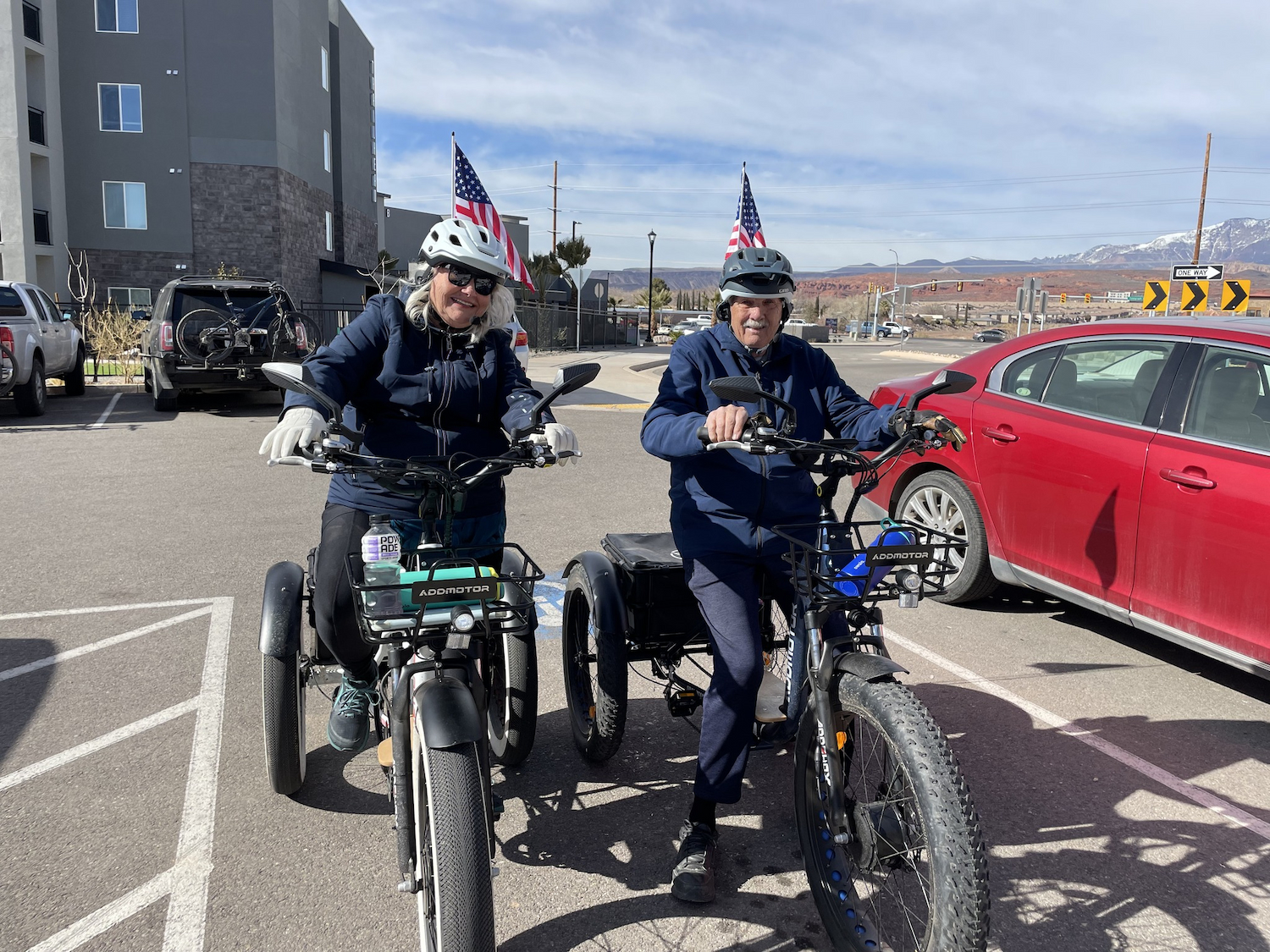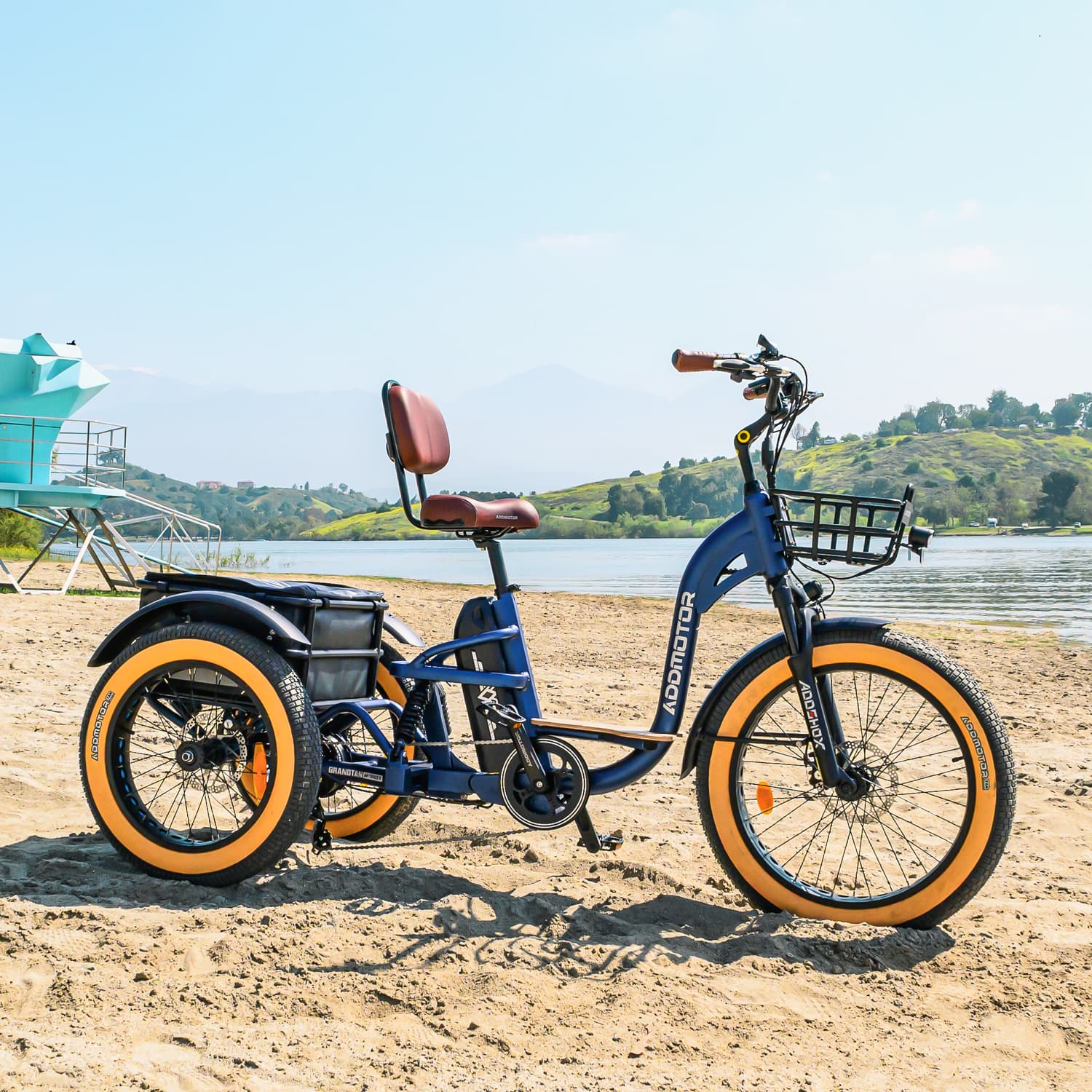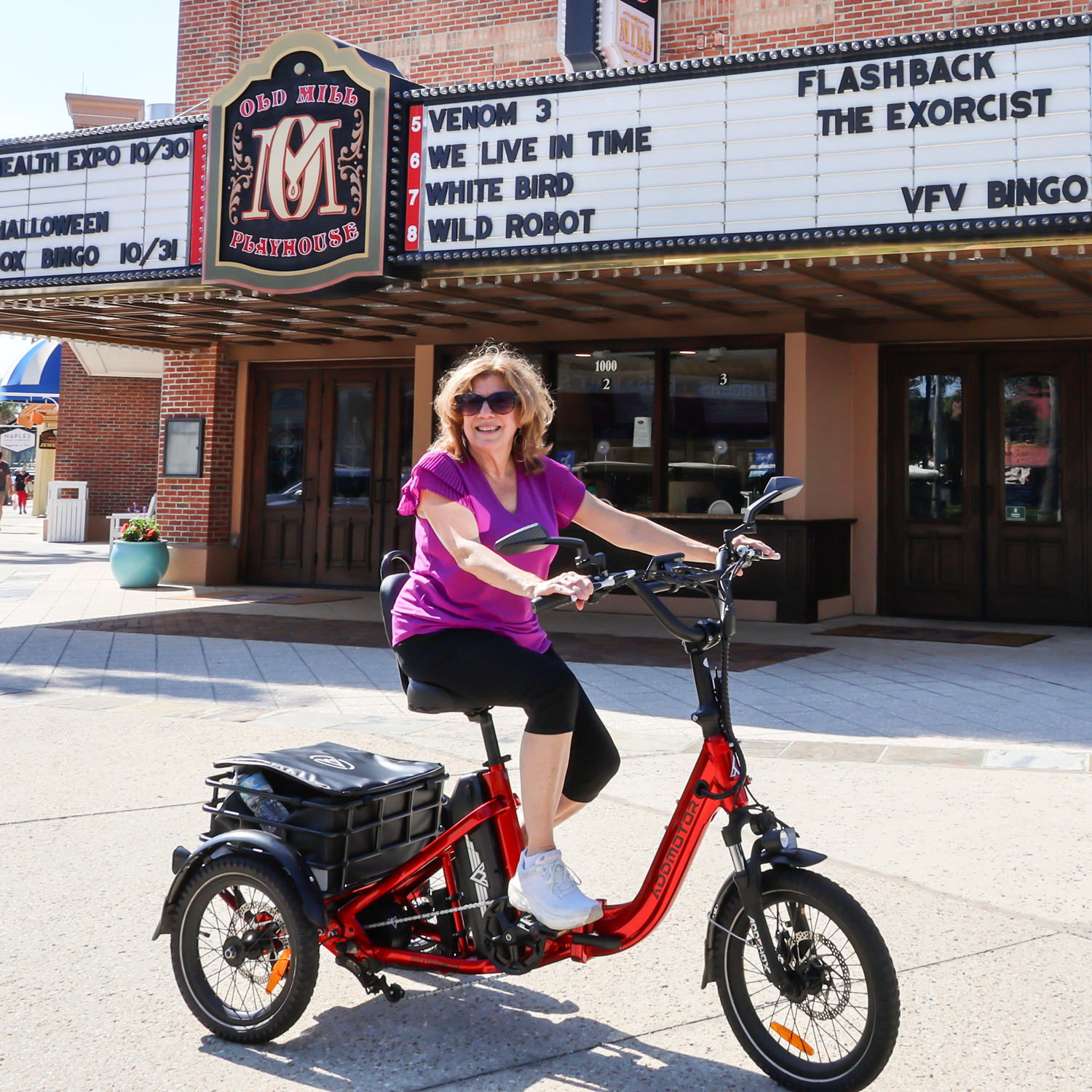Cold Weather Biking: Essential Gear and Safety Advice
By Addmotor | 21 December 2024 | 0 Comments
Biking in cold weather is not only unique, but also a physically challenging experience.
The quietness of winter landscapes, the crisp air, and the challenge of conquering icy roads bring a sense of adventure to avid cyclists. However, cold-weather biking is not without its challenges.
Proper preparation, the right gear, and safe riding techniques are vital to ensure a comfortable and injury-free ride.
This guide delves into everything you need to know about cold-weather biking, from dressing appropriately to maintaining your bike or electric trike during winter. 
Once you've made the initial adjustment, test your ride and fine-tune the pressure by slightly lowering or raising it to find a comfortable balance between stability and performance.

_1699859238.jpg)
Layering effectively, maintaining your bike, and practicing safe riding techniques will keep you comfortable and protected, no matter how low the temperature drops.
Embrace the winter season and enjoy your biking adventures with confidence.
The quietness of winter landscapes, the crisp air, and the challenge of conquering icy roads bring a sense of adventure to avid cyclists. However, cold-weather biking is not without its challenges.
Proper preparation, the right gear, and safe riding techniques are vital to ensure a comfortable and injury-free ride.
This guide delves into everything you need to know about cold-weather biking, from dressing appropriately to maintaining your bike or electric trike during winter.

Dressing for the Cold (For the Rider)
The key to staying warm and comfortable while biking in winter is layering your clothing effectively and protecting your extremities.Layered Clothing for Warmth
• Base Layer: Your base layer serves as the foundation of your outfit and plays a critical role in managing moisture. Choose materials like merino wool or synthetic fabrics, which wick sweat away from your skin while providing insulation. Items like long-sleeved shirts and thermal underwear ensure your body stays warm and dry.
• Mid Layer: The mid-layer traps heat and acts as insulation. Fleece jackets or lightweight down sweaters are ideal choices, as they keep your core warm without adding bulk. Maintaining your core temperature is crucial for keeping the rest of your body warm.
• Outer Layer: Your outer layer should shield you from wind and moisture. Invest in a high-quality waterproof and windproof jacket, along with pants that are breathable to prevent overheating. Look for cycling-specific outerwear with reflective strips to enhance visibility in low-light conditions.
Protecting Your Extremities
• Headgear and Ears: A significant amount of body heat escapes through your head, making it essential to wear a warm hat or balaclava under your helmet. A neck gaiter or scarf can also protect your face and neck from biting winds.
• Hands and Feet: Insulated gloves are a must to maintain dexterity and keep your fingers warm. For your feet, thermal socks made from wool or synthetic materials work best, paired with insulated or waterproof cycling shoes. Toe covers or shoe covers provide an added layer of protection against the cold.
• Eyewear: Cold winds and bright snow can irritate your eyes. Therefore, wear clear or tinted cycling glasses to shield them from wind, snow, and road debris.
Essential Cold-Weather Biking Gear
Preparing your best e trike for winter conditions is just as important as dressing appropriately.1. Specialized Winter Tires:
Winter roads can be unpredictable, with patches of snow and ice. Opt for wider, knobby, fat tire etrike that provide better traction. For icy conditions, studded tires offer superior grip and stability, reducing the risk of skidding.2. Tire Pressure:
When adjusting tire pressure for winter conditions, it's best to start by setting your PSI about 10 points below the manufacturer’s recommended amount. This reduction provides better traction on slippery or icy surfaces by increasing the tire's surface contact with the ground.Once you've made the initial adjustment, test your ride and fine-tune the pressure by slightly lowering or raising it to find a comfortable balance between stability and performance.
3. High-Visibility Gear:
Short winter days mean you’ll often bike in low-light conditions. Equip your bike or fat tire etrike with bright front and rear lights, and consider flashing lights to increase visibility to other road users. Reflective strips on your clothing and bike add another layer of safety.4. Fenders:
Winter rides often involve wet and slushy roads. Fenders are a simple yet effective way to protect yourself and your bike from mud, water, and road salt spray.5. Waterproof Bags and Covers:
Keep your belongings safe from moisture by using waterproof panniers or backpacks. If you carry your phone or other electronics, store them in sealed, waterproof bags for extra protection.
Riding Techniques for Cold-Weather Biking
Riding in winter requires a few adjustments to your technique to account for slippery and unpredictable conditions.1. Check the Weather Forecast
Before heading out, check the forecast for snow, wind, and temperature. Avoid biking during blizzards or when temperatures drop below safe levels, particularly with electric bikes.2. Adjust Riding Techniques
• Avoid Riding in Extreme Cold: It's best to avoid riding your electric trike in temperatures below -5°F. Extreme cold can negatively affect the performance and longevity of your e-bike's battery, reducing its capacity and range significantly. Additionally, the cold can make components like tires, brakes, and gears less responsive, increasing the risk of accidents.
• Braking: Roads can be slippery in winter, so increase your braking distance. Use gentle, even pressure on your brakes to avoid skidding, and keep your movements smooth.
• Cornering: When turning, lean on your fat tire etrike rather than your body to maintain balance. Slow down before approaching a corner to avoid sudden adjustments.
• Climbing and Descending: For uphill climbs, shift your weight slightly back to maintain traction. On descents, lower your speed and keep your pedal level for better stability.
• Take Breaks to Warm Up: On long rides, schedule short breaks indoors or in sheltered areas to warm up. Cold weather can drain your energy faster than you expect.
3. Bike and Battery Storage
The ebike batteries can be sensitive to extreme cold. Store your bike indoors in temperatures between 32°F and 70°F, and protect the battery with a thermal cover when riding. Avoid leaving your bike outside for extended periods.Safety Considerations
Winter biking comes with unique safety challenges. Prioritize your health and preparedness to enjoy a trouble-free ride.• Hydration and Nutrition: Cold weather can mask feelings of thirst, but staying hydrated is essential. Carry insulated water bottles to prevent freezing. High-energy snacks like nuts, granola bars, or energy gels will help maintain your stamina.
• Hypothermia and Frostbite: Exposure to extreme cold can lead to hypothermia or frostbite. Know the warning signs, such as numbness, shivering, or pale skin. Have a plan to get indoors or into a warm environment if needed.
Common Mistakes to Avoid While Winter Biking
Avoid these common mistakes while riding to make the most of your winter cycling experience:• Overdressing or Underdressing: Wearing too many layers can lead to sweating and discomfort, while too few layers leave you vulnerable to the cold. Experiment with your clothing to find the right balance.
• Neglecting Maintenance: Winter weather is tough on bikes. Snow, ice, and road salt can cause rust and damage components if not cleaned regularly.
• Ignoring Road Conditions: Riding too fast or ignoring icy patches can result in accidents. Always assess road surfaces carefully and adjust your speed accordingly.
Maintenance Tips for Winter Riding
Taking care of your best e trike during winter ensures it remains in good condition throughout the season.• Clean Your Bike After Every Ride: Rinse off salt, snow, and grime after each ride to prevent rust and corrosion. Pay special attention to the chain, gears, and tires.
• Use Winter-Specific Lubricants: Cold, wet conditions require lubricants designed for winter use. Apply them to your chain and other moving parts to keep your bike running smoothly.
• Regularly Inspect Tires and Brakes: Winter riding causes faster wear and tear on tires and brake pads. Check for tread wear and ensure your brakes are responsive before every ride.
• Protect the Battery: Store your best e trike battery indoors to keep it at optimal temperature, and charge it after each ride. Cold temperatures can reduce battery performance, so avoid letting it freeze.
_1699859238.jpg)
Conclusion
Cold-weather biking is a rewarding activity that brings a fresh perspective to cycling. With the right gear, electric trike preparation, and safety measures, you can enjoy the beauty and challenges of winter rides.Layering effectively, maintaining your bike, and practicing safe riding techniques will keep you comfortable and protected, no matter how low the temperature drops.
Embrace the winter season and enjoy your biking adventures with confidence.
Leave a Reply
Your email address will not be published.Required fields are marked. *
Latest Stories




